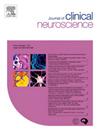促进体育锻炼对偏头痛的影响-基于视频的随机临床试验
IF 1.8
4区 医学
Q3 CLINICAL NEUROLOGY
引用次数: 0
摘要
偏头痛显著影响生活质量,相当大比例的受试者经历难治性偏头痛。非药物策略,如体育锻炼,已显示出在头痛控制方面的潜在益处。本研究旨在评估基于视频的教育干预在促进身体活动和改善偏头痛相关结果方面的有效性。方法采用单中心、单盲随机临床试验,纳入葡萄牙波尔图某三级医院的65例偏头痛患者。参与者按年龄分层,随机分为干预组和对照组,干预组在三个月内接受七部关于运动益处的教育视频,对照组接受常规护理。在基线(T0)和6个月后(T6;干预后3个月)。主要结局包括头痛影响测试-6项(HIT-6)评分;次要结局包括偏头痛频率、急性药物使用和三项身体活动指数。预防性治疗遵循标准临床实践,医生对组分配不知情。统计学分析包括组间比较和组内比较(p≤0.05)。结果105例随机受试者中,65例完成研究(61.9%;干预组53人中有32人,对照组52人中有33人)。基线社会人口学和头痛特征在两组之间具有可比性,包括使用预防性药物的数量和类型。在基线时,休闲时间体力活动与HIT-6评分呈负相关。干预组每月头痛频率(p = 0.003)和急性药物摄入(p = 0.005)显著降低,但HIT-6评分和身体活动指数无显著改善。本研究表明,即使没有显著改变身体活动水平,低成本、可获得的基于视频的教育干预也可以减少偏头痛的频率和急性药物使用。通过提高认识和促进自我管理,这些工具可以补充传统护理。未来的研究应该探索个性化的、多模式的策略,结合教育、行为支持和药物治疗来优化偏头痛的结果。本文章由计算机程序翻译,如有差异,请以英文原文为准。
Impact of promoting physical exercise on migraine – A video-based randomized clinical trial
Introduction
Migraine significantly impacts quality of life, and a substantial proportion of subjects experience refractory migraine. Non-pharmacological strategies, such as physical exercise, have shown potential benefits in headache control. This study aims to evaluate the effectiveness of a video-based educational intervention in promoting physical activity and improving migraine-related outcomes.
Methods
A single-centre, single-blinded randomized clinical trial included 65 migraine subjects from a tertiary hospital in Porto, Portugal. Participants were stratified by age and randomized into an intervention group, receiving seven educational videos on exercise benefits over three months, or a control group, receiving usual care. Assessments were conducted at baseline (T0) and six months later (T6; three months after intervention). Primary outcome included the Headache Impact Test – 6 item (HIT-6) score; secondary outcomes included migraine frequency, acute medication use, and three Physical Activity Indices. Preventive treatments followed standard clinical practice, with physicians blinded to group allocation. Statistical analyses included between-group and within-group comparisons (p ≤ 0.05).
Results
Among 105 randomized subjects, 65 completed the study (61.9 %; 32 out of 53 in the intervention group vs. 33 out of 52 in the control group). Baseline sociodemographic and headache characteristics were comparable between groups, including the number and the type of preventive medication used. A negative correlation between leisure-time physical activity and HIT-6 score was observed at baseline. The intervention group showed significant reductions in monthly headache frequency (p = 0.003) and acute medication intake (p = 0.005), but no significant improvements in HIT-6 score or physical activity indices.
Conclusions
This study shows that a low-cost, accessible video-based educational intervention can reduce migraine frequency and acute medication use, even without significantly changing physical activity levels. By increasing awareness and promoting self-management, such tools may complement conventional care. Future studies should explore personalized, multimodal strategies combining education, behavioural support, and pharmacological treatments to optimize migraine outcomes.
求助全文
通过发布文献求助,成功后即可免费获取论文全文。
去求助
来源期刊

Journal of Clinical Neuroscience
医学-临床神经学
CiteScore
4.50
自引率
0.00%
发文量
402
审稿时长
40 days
期刊介绍:
This International journal, Journal of Clinical Neuroscience, publishes articles on clinical neurosurgery and neurology and the related neurosciences such as neuro-pathology, neuro-radiology, neuro-ophthalmology and neuro-physiology.
The journal has a broad International perspective, and emphasises the advances occurring in Asia, the Pacific Rim region, Europe and North America. The Journal acts as a focus for publication of major clinical and laboratory research, as well as publishing solicited manuscripts on specific subjects from experts, case reports and other information of interest to clinicians working in the clinical neurosciences.
 求助内容:
求助内容: 应助结果提醒方式:
应助结果提醒方式:


